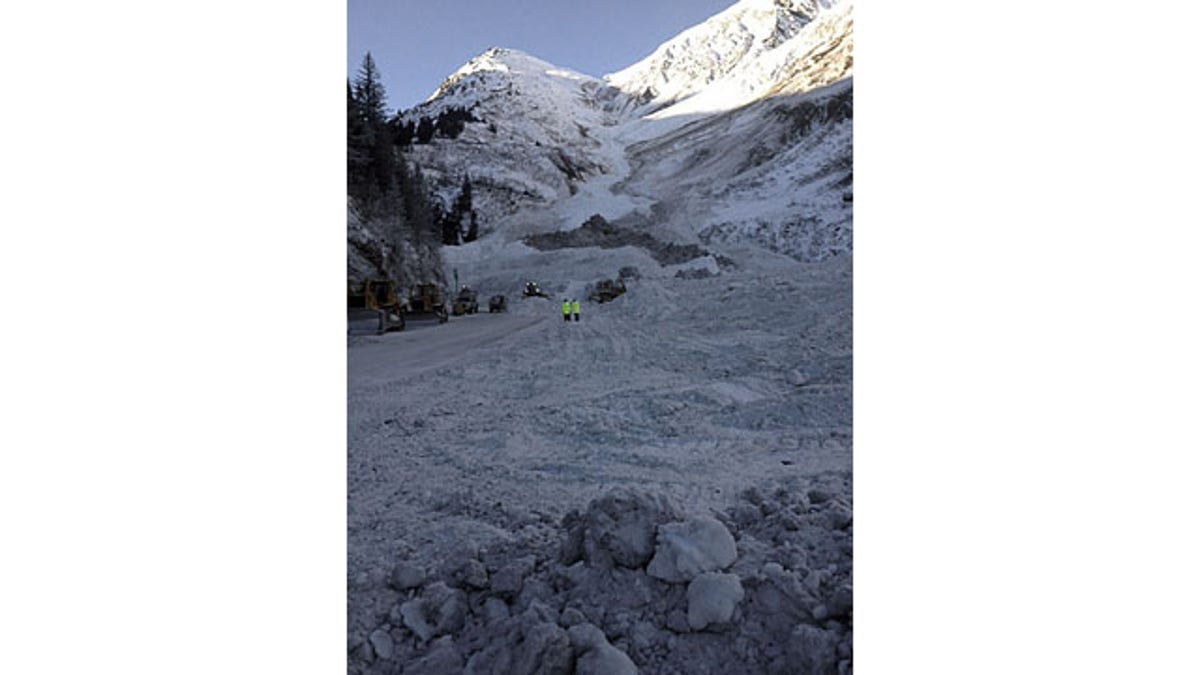
February 4, 2014: This photo provided by the Alaska Department of Transportation shows snow from an avalanche covering a road outside of Valdez, Alaska. Alaska highway officials say they expect to reopen an avalanche-choked highway by Wednesday afternoon, nearly two weeks after walls of snow cut off the only road into Valdez. (AP Photo/Alaska Dept. of Transportation)
ANCHORAGE, Alaska – Cars and trucks could be rolling into the city at the end of the trans-Alaska pipeline by Wednesday afternoon, nearly two weeks after avalanches cut off highway access.
A spokeswoman for the Alaska Department of Transportation said Tuesday that road crews are nearing completion of snow removal from the last blockage of the Richardson Highway, about 12 miles from Valdez. The highway is projected to open at 3 p.m. Wednesday.
Hannah Blankenship said damage has mostly been limited to guardrails. Previous avalanches had not damaged the roadbed, and that was the case again.
A dozen or so avalanches combined to close the highway Jan. 24, including two that completely covered the highway and about 10 that partially covered it.
Heavy early winter snow was followed in January by unseasonably warm temperatures and then rain. The precipitation trigged avalanches. One major avalanche was in Thompson Pass at Mile 39. That avalanche and the smaller ones were cleared last week.
A second major avalanche filled Keystone Canyon, which begins at Mile 12 and is roughly 300 feet wide. Snow piled up on the road 40 to 50 feet high from canyon wall to canyon wall for 1,000 to 1,500 feet.
It also dammed the Lowe River, creating a lake that covered 2,500 feet of highway. Excavation crews could not reach the upstream side of the avalanche until Friday after water drained or returned to the river channel. The highway department also reduced the threat of additional avalanches by dropping explosives from a helicopter in avalanche chutes.
About 10 workers at a time with excavators, bulldozers, loaders and a "rock truck," described as high-volume dump truck with extra-large wheels, have been working in 12-hours shifts around the clock since Friday to remove snow. The department completed stability tests to ensure the highway could support heavy loads.
Crews were giving the walls of snow parallel to the highway a slope to snow does not slough off into the roadway, Blankenship said.
Valdez remained accessible by air and water.

